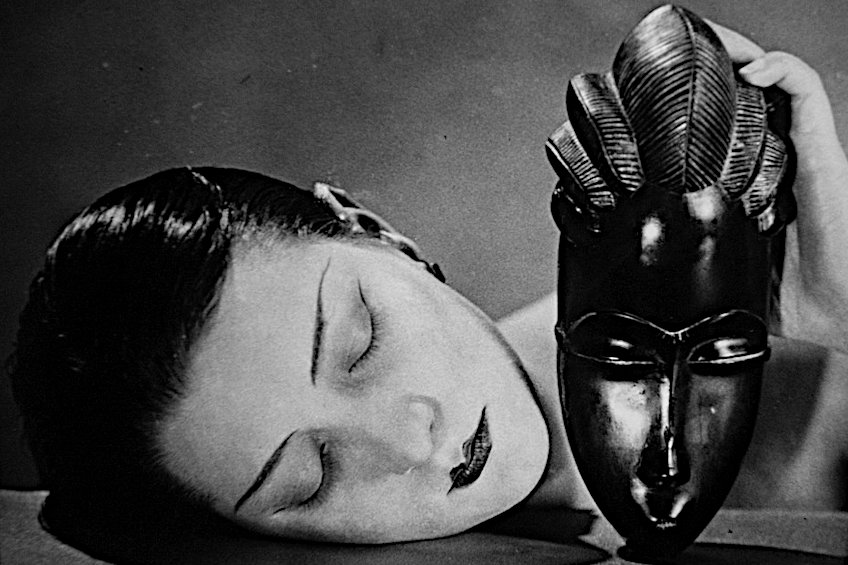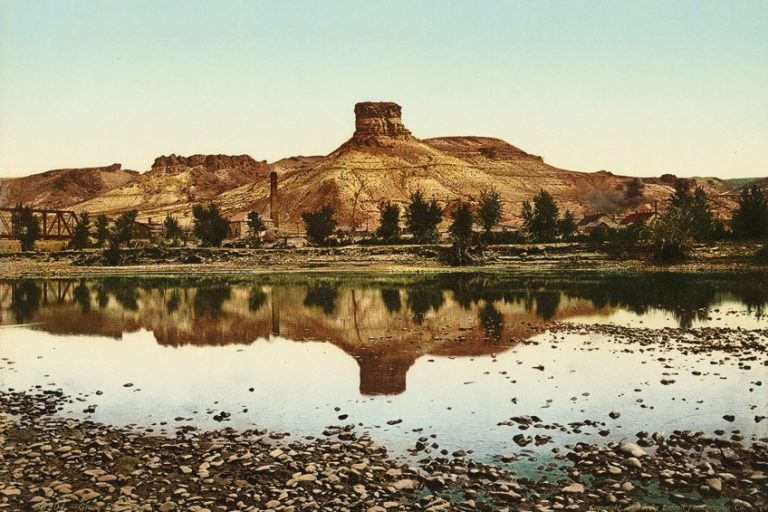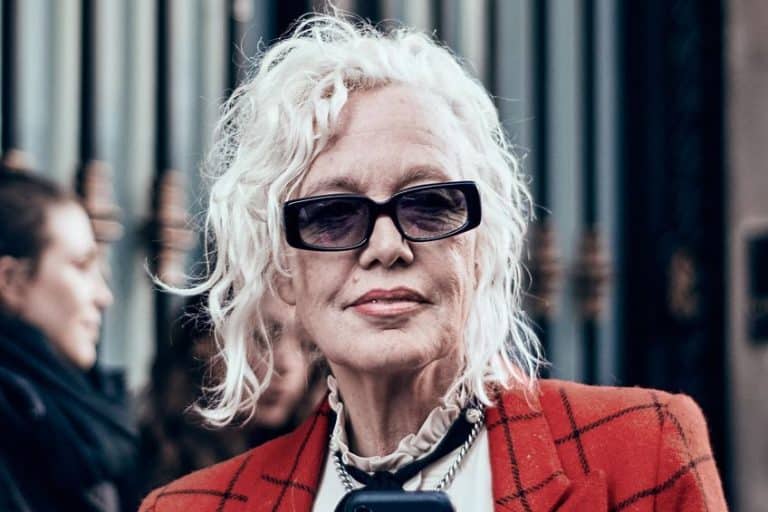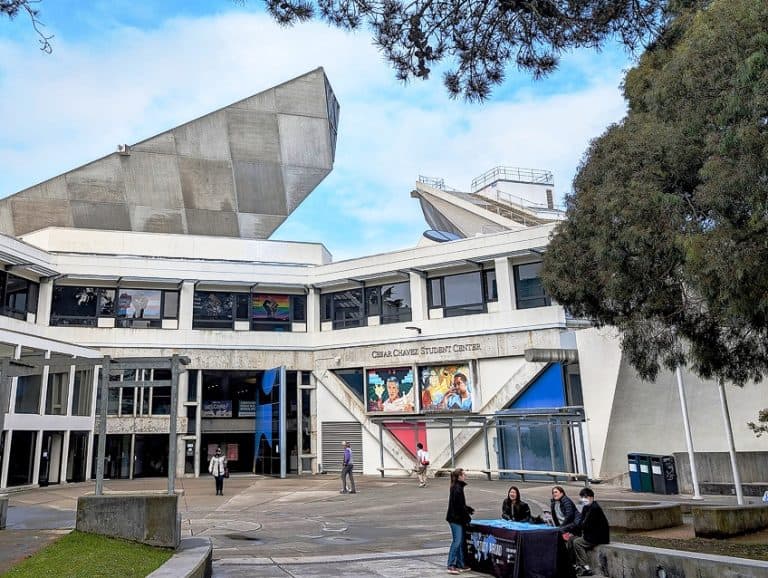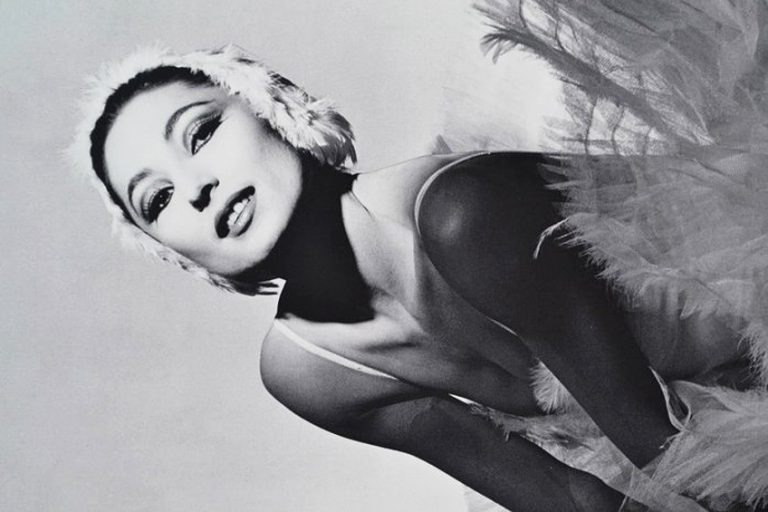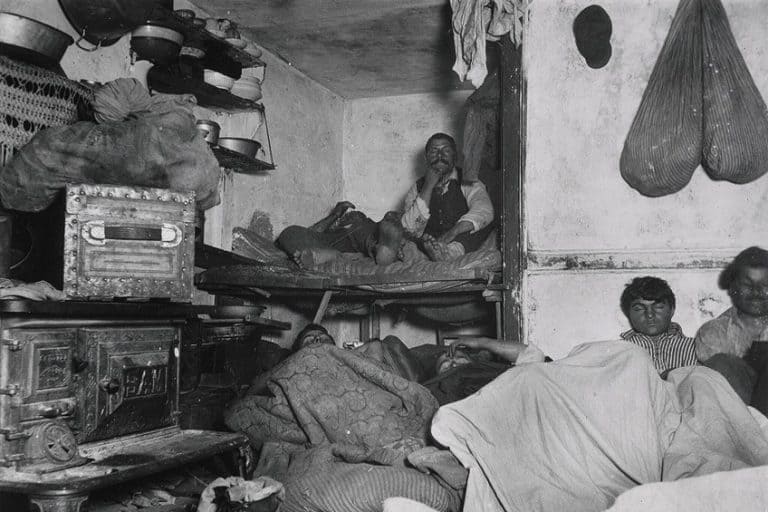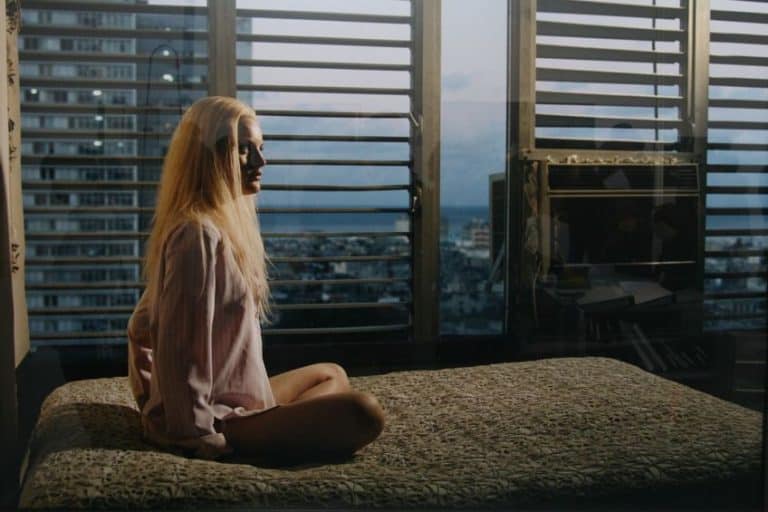Famous Nude Photographers – Explorers of the Human Form
For some people, the idea of nude model photographers brings to mind darkened rooms and racy poses, yet in reality, nude art photography couldn’t be further removed from that description. Artistic nude photographs are not intended to be pornographic, but rather to explore the visual and conceptual impact of the human form. This is in keeping with a longstanding artistic tradition that can be traced back to ancient Greek celebrations of human physicality. Famous nude photographs depict the proportions, contours, and textures that make the human body so visually and conceptually compelling. In this article, we will present the famous nude photographers that have managed to capture the essence of the human form through their own signature aesthetic styles.
Revealing the Most Famous Nude Photographers
While the naked human body is innately sensual, it does not have to necessarily be portrayed as overtly sexual, and nude art photography is a great illustration of that point. Whether a nude male photographer or an individual who specializes in nude women photography, the goal of the photographer is to convey a certain message utilizing the naked human form as their subject, or sometimes, as the canvas itself.
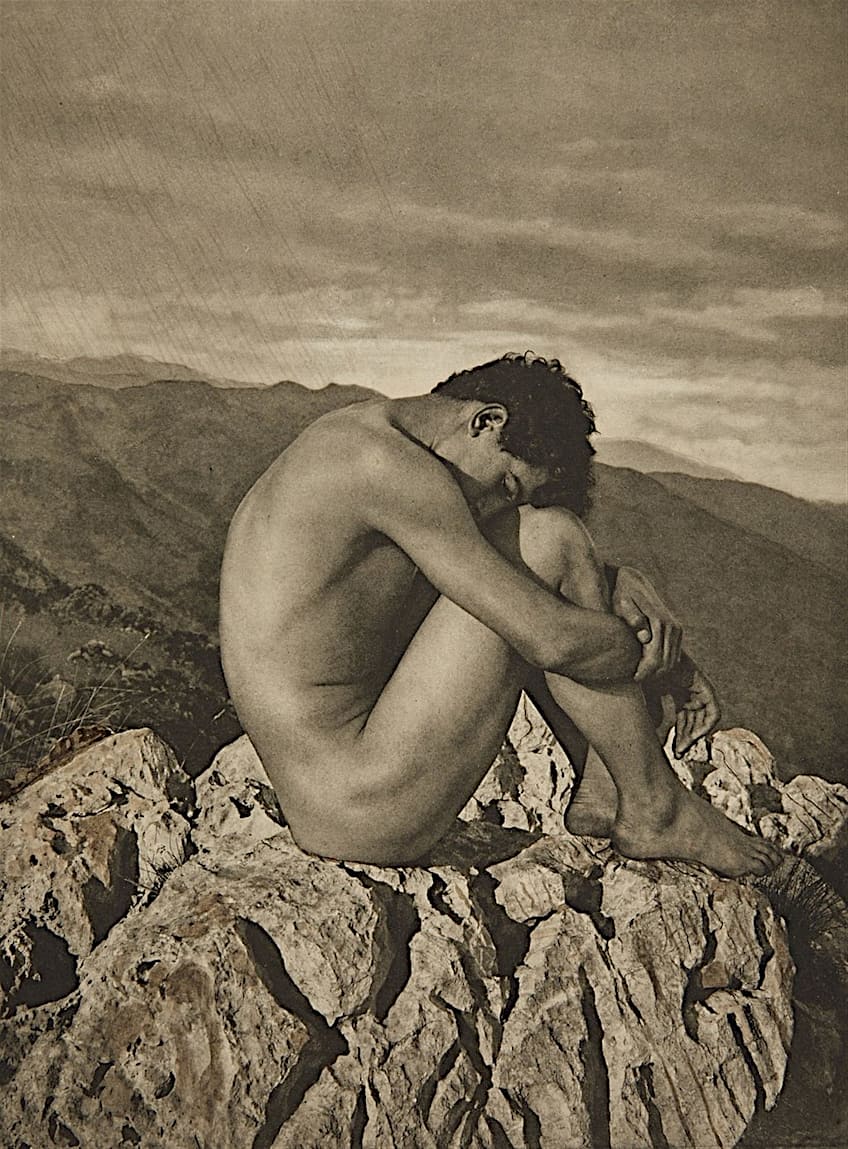
The human body can be very flexible. Photographers have painted and contorted bodies into unusual shapes to become a combination of contours, shapes, and colors.
Other famous nude photographers simply try to capture the beauty of the naked human form in its raw and untouched state. Following below is a list of a few of the most renowned nude model photographers.
Auguste Belloc (1805 – 1867)
| Artist Full Name | Auguste Belloc |
| Nationality | French |
| Date of Birth | 7 September 1805 |
| Date of Death | c. 1867 |
| Place of Birth | Montrabé, France |
French photographer Auguste Belloc was well-known for his nude women photography. He was a Montrabé native who passed away in Paris. Belloc started off as a watercolor and miniature painter. The first photography studio owned by Belloc was established in 1851.
Belloc developed the wax coating technique, engaged in wet collodion development, and explored daguerreotypes, all of which helped the pictures retain their impression of being wet.
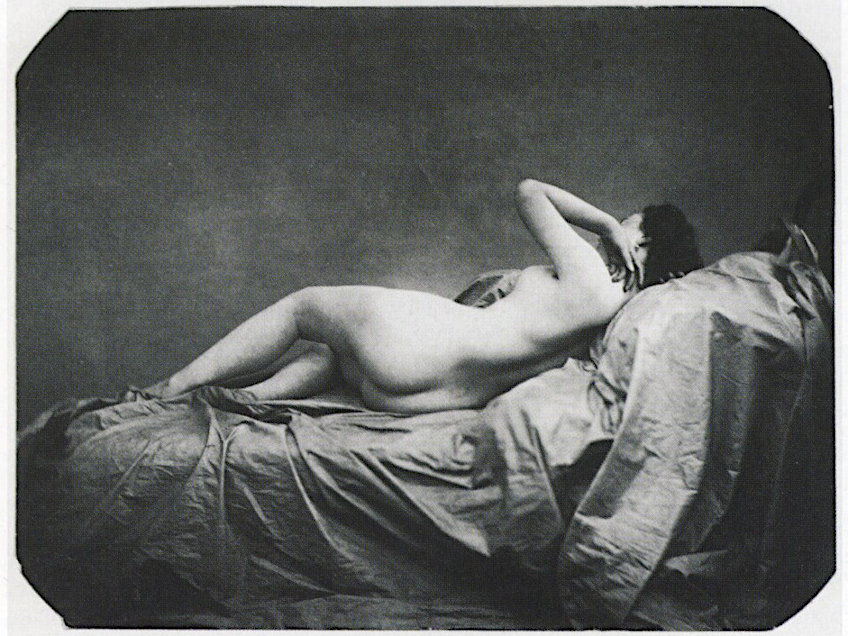
Belloc started producing, manufacturing, and distributing photographic materials and equipment in the mid-1850s and continued to do so until his death in 1867. Marconi replicated and published Belloc’s famous nude photographs, which were considered obscene at the time. In 1856, the authorities seized 5,000 artistic nude pictures (many finely colored by hand) produced by Auguste Belloc. He received a three-month jail sentence, and the photographs were entrusted to the Bibliothèque Nationale.
Nadar (1820 – 1910)
| Artist Full Name | Gaspard-Félix “Nadar” Tournachon |
| Nationality | French |
| Date of Birth | 5 April 1820 |
| Date of Death | 20 March 1910 |
| Place of Birth | Paris, France |
Gaspard-Félix Tournachon, a French photographer, artist, writer, and balloonist, used the alias Nadar. He is well-known for his portrait photography as well as his achievements as an aerial photography pioneer.
Nadar was also intrigued by photography’s aesthetic potential, and he experimented with a variety of approaches and styles, such as the application of unique lighting effects and the utilization of the camera to record movement.

Nadar’s work was occasionally divisive, as he is also known for his famous nude photographs, which were deemed scandalous at the time. He was, nevertheless, a well-known and significant figure in the field of photography, and his contributions to the discipline are still acknowledged today. He not only dabbled in nude art photography and aerial photography, though. Around 1863, Nadar created The Giant, a massive balloon that inspired Five Weeks in a Balloon (1863) by Jukes Verne. Despite the fact that the massive project was originally a failure, Nadar was still certain that balloon aircraft were the way of the future.
Nadar created movable barricades to keep the throng at bay during his visit to Brussels with The Giant on the 26th of September 1864. In Belgium, crowd management barriers are still referred to as Nadar barriers today.
Alfred Stieglitz (1864 – 1946)
| Artist Full Name | Alfred Stieglitz |
| Nationality | American |
| Date of Birth | 1 January 1864 |
| Date of Death | 13 July 1946 |
| Place of Birth | Hoboken, New Jersey, United States |
Photographer Alfred Stieglitz was crucial in promoting photography as a respected fine art medium through his artwork and writings. Stieglitz’s most famous photographs are of the artist Georgia O’Keeffe, and in keeping with his assumption that great photography “can become more real than reality”, these close-up portrayals communicate as much information about form as they do about her character and their relationship (she who would later become his wife). He captured his new subject from every aspect, with a sexual tension that did not go against the new circle’s aesthetic rules: to reject puritanism and embrace American art.
Her face was photographed up close, as were her hands and torso. He documented her nakedness, constantly looking for a way to capture her mystery; her hands create a type of dance, and her buttocks shaped beneath damp cloths indicate a tension more sexual than any other angle or view.
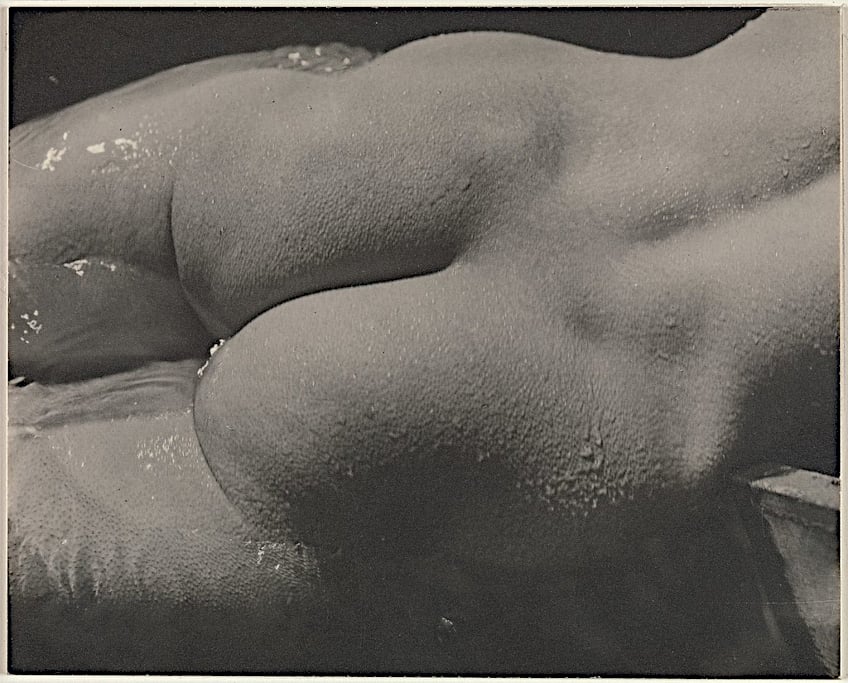
Stieglitz was obsessively committed to his work and cause, publishing thousands of editions throughout his career that covered a wide range of topics and chronicled a moment of rapid change in American culture. In 1905, he founded the 291 Gallery in New York City to exhibit avant-garde European painters and trailblazing photographers. Stieglitz fulfilled his objective of having photography displayed alongside art and, as a result of his efforts, is recognized as an influential proponent of early Modernism rather than just an advocate of photography.
Imogen Cunningham (1883 – 1976)
| Artist Full Name | Imogen Cunningham |
| Nationality | American |
| Date of Birth | 12 April 1883 |
| Date of Death | 23 June 1976 |
| Place of Birth | Portland, Oregon, United States |
Cunningham hired a married couple with a small child to pose for her in 1910 when she was still relatively unknown. She took photographs of them near a pond, where they undressed and walked into the water, the naked father leading the youngster into the water with his hand. When the piece was released in a periodical called the Town Crier five years after it was shot, it was condemned by women and men for its nudity, with one newspaper stating that “a group of morally depraved perverts” were responsible.
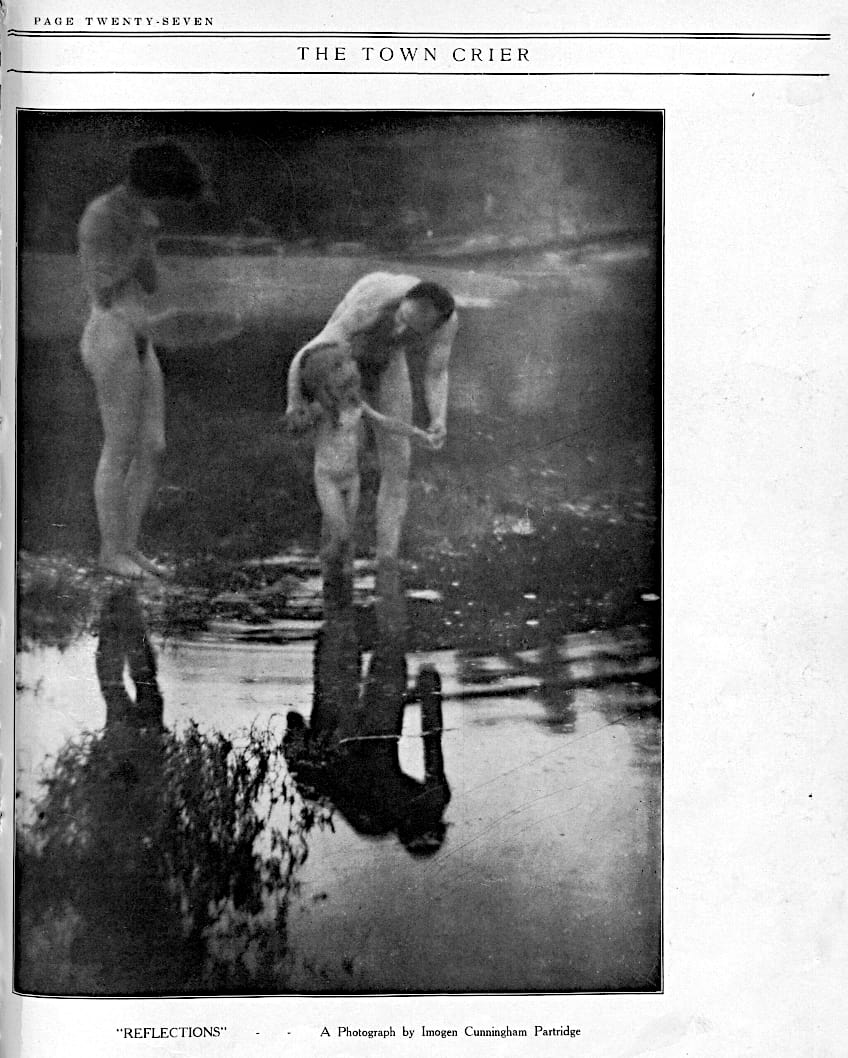
Despite enjoying nude women photography and also being a nude male photographer, she was far from the pervert the media tried to paint her as. She was able to produce a sensitive and personal gaze in images such as the one of the naked family, showing individuals at peace and content with themselves.
In another collection, she captured her husband, atop Mount Rainier naked, producing images that appear to blend his body with the undulating rivers surrounding him. She developed views of backs, breasts, and legs around a decade later that creatively abstract the human body into intersecting mathematical patterns. Even images without humans in them show Cunningham’s focus on sexuality. Her late-1920s flower shots have been likened to Georgia O’Keeffe’s artworks, for the way in which her works turn flowery blooms into forms resembling female genitalia.
Edward Henry Weston (1886 – 1958)
| Artist Full Name | Edward Henry Weston |
| Nationality | American |
| Date of Birth | 24 March 1886 |
| Date of Death | 1 January 1958 |
| Place of Birth | Highland Park, Illinois, United States |
Edward Henry Weston was a still life, landscape, and nudist photographer from the United States. Weston was a member of the “American Modernists”, a collection of photographers who wanted to raise photography to the realm of fine art. Weston’s artistic nude photographs were generally distinguished by their purity, simplicity, and focus on form and texture.
Weston was fascinated by the abstract features of the human form, and his famous nude photographs concentrated on the lines, forms, and curves of the body rather than the subject’s individuality or personality.
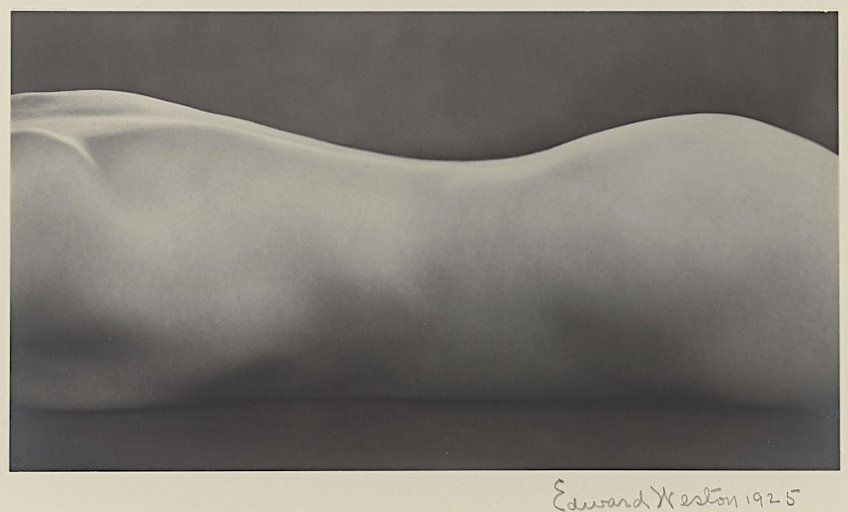
According to Weston, “all that is required for a decent picture is a great subject, good lighting, and appropriate composition.” He was the very first photographer to obtain a Guggenheim Fellowship in 1937, and he generated approximately 1,400 photographs over the next two years. Some of his most renowned images were shot of the rocks and trees near where he resided for many years, at Point Lobos, California. Weston was raised in Chicago and relocated to California at the age of 21. He recognized his desire to be a photographer from a young age, and his initial work was typical of the fashionable soft-focus pictorialism of the period.
Man Ray (1890 – 1976)
| Artist Full Name | Emmanuel “Man Ray” Radnitzky |
| Nationality | American |
| Date of Birth | 27 August 1890 |
| Date of Death | 18 November 1976 |
| Place of Birth | Philadelphia, Pennsylvania, United States |
Man Ray was a visual artist from the United States who spent the majority of his career in Paris. He was an important contributor to both the Surrealist and Dada movements, although his affiliations to each were rather loose. He created significant works in a range of media but regarded himself mostly as a painter. He was a prominent portrait and fashion photographer who was well-recognized for his pioneering photography. He is also known for his experiments with photograms, which he dubbed “rayographs” after himself. Man Ray revealed very few facts about his younger years or family history to the public during his career. Man Ray even refused to admit that he had a conventional birth name.
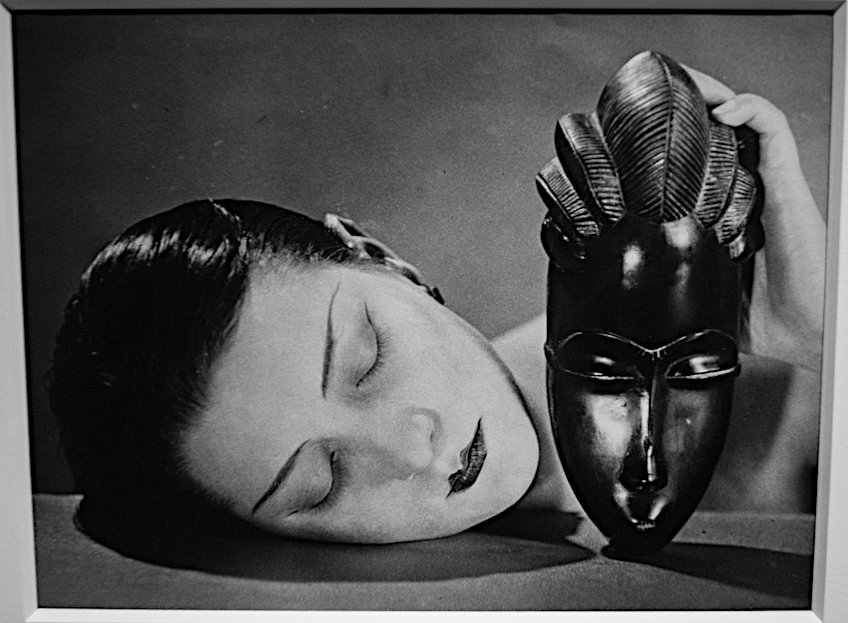
For Ray, a woman’s body was only a thing, to be handled with the same interest or indifference as a jewel or porcelain. He was fascinated by the theme, the curvature, and the dance of light and shadow. His famous nude photographs were frequently more disfigured than ancient statues.
Ray did not plan his shoots, aiming instead to capture transitory moments. In his photographic pursuit of the elegant, the humorous, and beauty in and of itself, he abandoned any sense of his individuality, voluntarily sacrificing the overall image, by focusing on a single feature that enticed him. He appreciated how the lighting cut out the shapes with stark clarity, highlighting the volumes and allowing for contrasts.
André Kertész (1894 – 1985)
| Artist Full Name | André Kertész |
| Nationality | Hungarian |
| Date of Birth | 2 July 1894 |
| Date of Death | 28 September 1985 |
| Place of Birth | Budapest, Hungary |
André Kertész was a Hungarian-born photographer best recognized for his contributions to journalism and creative photography. Throughout his career, he photographed a wide range of subjects, including still lifes, landscapes, portraits, and street scenes. Kertész’s nude images were noted for their simplicity and purity of form.
He was well-known for his ability to depict the human body in a naturalistic and unselfconscious manner. Kertész believed that the camera had the potential to reveal the subject’s inner spirit, and he strove to capture this essence in his images of the human form.
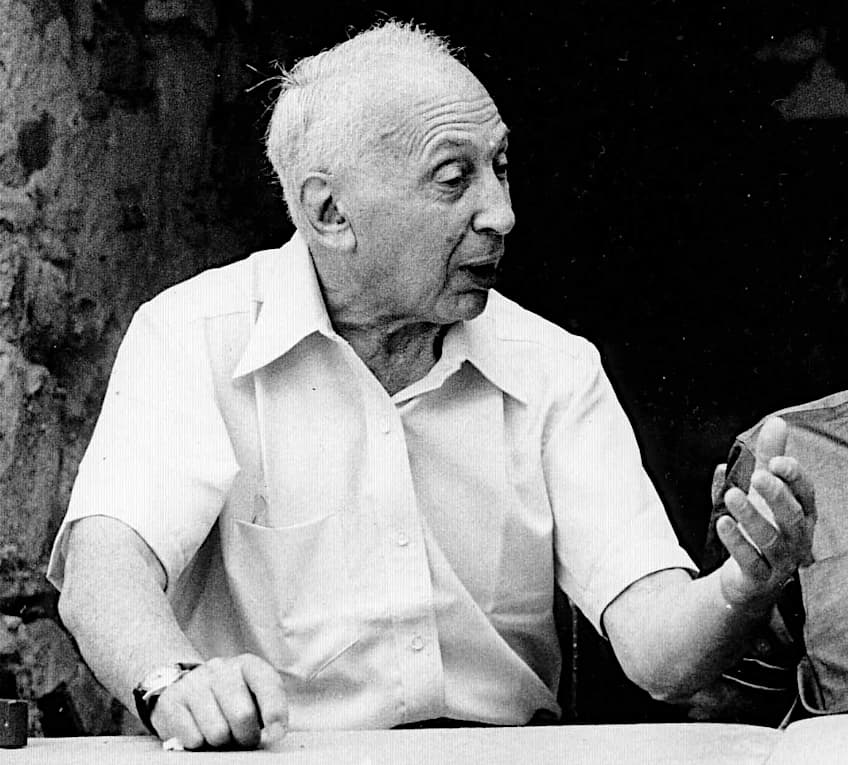
André Kertész is widely regarded as one of the 20th century’s most important photographers. He grasped the poetry of modern urban life, with its subtle, frequently unexpected, occasionally humorous, or even surreal juxtapositions, by working instinctively. With his camera, he attempted to give meaning to everything around himself, “to produce images as by a mirror’s reflection unmanipulated and straightforward as in life”. Kertész produced a pure photographic style that honors direct observation of the commonplace by combining this essentially artless spontaneity with a strong knowledge of composition.
He was neither a surrealist nor a rigorous photojournalist, yet his greatest photographs had significant elements of both. “You don’t see what you capture”, he says, “you experience it”.
Sasha Stone (1895 – 1940)
| Artist Full Name | Sasha Stone |
| Nationality | Russian-American |
| Date of Birth | 19 December 1895 |
| Date of Death | 6 August 1940 |
| Place of Birth | Saint Petersburg, Russia |
Sasha Stone was involved with the New Objectivity movement in Germany throughout the 1920s, and his photomontage was reprinted on the cover of One-Way Street (1928) by Walter Benjamin. He had a successful photography business in Berlin from 1924 until 1931. He was recognized for his imaginative commercial work and supplied journalistic photos to several of the major illustrated publications, including Die Dame, Uhum, and Berliner Illustrierte Zeitung. Femmes, a portfolio of Stone’s studies of nude women photography, was published in 1933 by the French journal Arts et Metiers Graphique as the first of a collection of three proposed portfolios on the human body.

Stone’s images are excellent examples of avant-garde photography aesthetics in Europe in between wars, with their fragmented bodies, jagged compositions, and utilization of raking light.
In 1933, Sasha Stone photographed 25 women. He opted to leave aside fashion models for this undertaking in order to liberate himself from the perception of this era’s clichés of women and concentrate on the intricacies and gestures of the contemporary women of that period.
Paul Outerbridge (1896 – 1958)
| Artist Full Name | Paul Outerbridge |
| Nationality | American |
| Date of Birth | 15 August 1896 |
| Date of Death | 17 October 1958 |
| Place of Birth | New York, United States |
American photographer, Paul Outerbridge, was known for his early experiments and utilization of color photography. He was a fashion and corporate photographer, an early color pioneer and instructor, and an artist who made sexual nude images that could not be displayed during his lifetime. Outerbridge’s images were featured in a show at the Museum of Modern Art in 1937, and in 1940, he released his important book, Photographing in Color, which used high-quality graphics to demonstrate his processes.
Outerbridge’s brilliant color nude studies contained early fetish images and were considered too obscene by modern standards to be accepted by the general public.
Outerbridge retired as a business photographer and relocated to Hollywood in 1943 after an erotic photography scandal. Despite the uproar, he continued to write his regular column and submit photojournalistic articles to periodicals. He married Lois Weir, the fashion designer, in 1945 and began working on their joint fashion brand, Lois-Paul Originals. In 1958, he died of lung cancer, and the Smithsonian Institution mounted a one-man display of Outerbridge’s images a year after his death.
Although his fame has diminished, revivals of Outerbridge’s photography in the 1970s and again in the 1990s brought him back into the public eye. His art, which is heavily influenced by Surrealism, mixes compositional complexity with fetishistic sexuality. His pictures, conveyed by remarkably realistic color prints, were inspired by ancient Greece, the Bauhaus movement, and the Narcissus subject.
Outerbridge’s nude bodies fit into a sexual narrative centered on desire, exhibitionism, and voyeurism. Some critics saw the models’ utterly sexual beauty, conscious of their victorious womanhood, as a provocation, or even depravity.
Erwin Blumenfeld (1897 – 1969)
| Artist Full Name | Erwin Blumenfeld |
| Nationality | German-American |
| Date of Birth | 26 January 1897 |
| Date of Death | 4 July 1969 |
| Place of Birth | Berlin, Germany |
Along with Horst P. Horst, George Hoyningen-Huene, and Cecil Beaton, Erwin Blumenfeld is regarded as one of the first pioneers of fashion photography.
Blumenfeld’s singular and masterful fusion of gracefulness and eroticism changed fashion into high art and set the stage for Irving Penn, Richard Avedon, Herb Ritts, and other photographers who gained such prominence and acknowledgment in the history of art.
This was in addition to his use of experimental methods in the darkroom, Surrealist and Dada influences, and groundbreaking street work. Blumenfeld frequently used mirrors, glass, and backdrops replicated from paintings, pictures of cathedrals, or collages of magazine covers in his workshop. He frequently used veils, which may distort or extend the form, believing that a female who was partly veiled was more erotically loaded than one who was entirely naked.
He also thought that the act of printing the picture was as essential as the act of capturing it, and such as with Man Ray, he was relentlessly imaginative in the darkroom, employing a range of optical and chemical techniques, such as repeated exposures, bleaching, and solarization.
Blumenfeld’s images were regularly published in the pages of Harper’s Bazaar, Cosmopolitan, Life, and Vogue from the 1930s through the 1950s, in addition to maintaining the record for the most Vogue covers.
Germaine Krull (1897 – 1985)
| Artist Full Name | Germaine Luise Krull |
| Nationality | German |
| Date of Birth | 29 November 1897 |
| Date of Death | 31 July 1985 |
| Place of Birth | Wilda, Poznań, Poland |
Germaine Krull was an activist, photographer, and hotelier. Her nationalities have been listed as Polish, German, French, and Dutch, yet she has spent time in the Democratic Republic of the Congo, Brazil, Thailand, and India. Characterized as an unusually vocal example of a group of early 20th-century female photographers who were able to exist free from the status quo, she is mainly remembered for photographically-illustrated publications such as her 1928 portfolio Métal.
The famed photographer was born to a wealthy German family in Wilda, Poznan, then situated on the border between Poland and Germany in East Prussia.
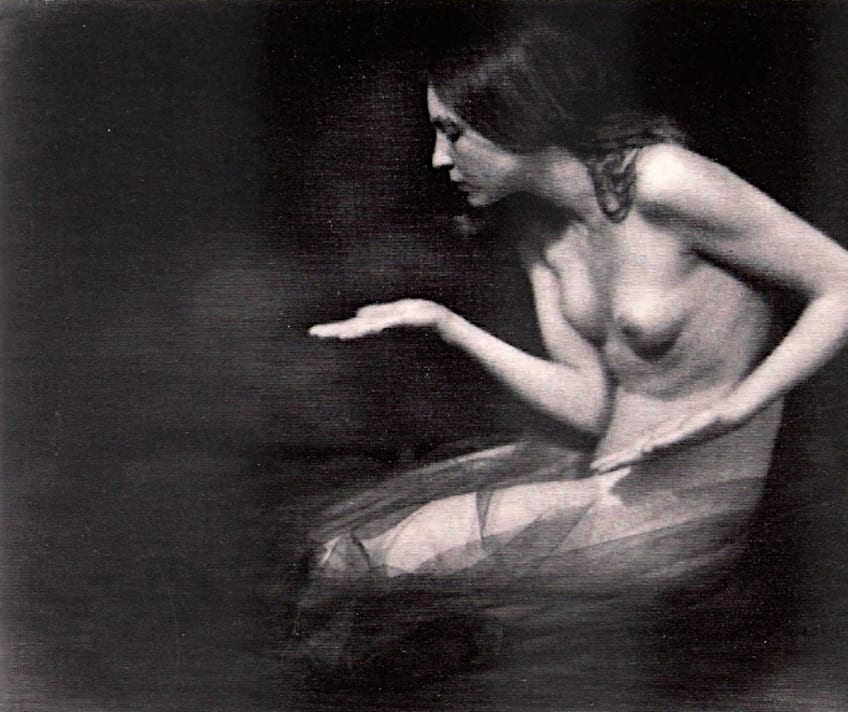
Between 1928 and 1933, her photography was predominantly photojournalism, as seen by her images for Vu, a French magazine. She also conducted a groundbreaking investigation into Britain’s employment hotspots for Weekly Illustrated in the early 1930s. The majority of her ground-breaking reporting from this time period is still preserved in newspaper archives, and she has never been given credit for it. She released Studies of Nudes in 1930, and it is still widely read today. She visited Southeast Asia after World War II as a war journalist, but by 1946 she had joined the Oriental Hotel in Bangkok as a co-owner.
George Brassaï (1899 – 1984)
| Artist Full Name | George Brassaï |
| Nationality | Hungarian-French |
| Date of Birth | 9 September 1899 |
| Date of Death | 8 July 1984 |
| Place of Birth | Brasov, Romania |
George Brassaï was a Hungarian sculptor, photographer, and filmmaker who achieved international acclaim in the 20th century in France. He was one of several Hungarian painters who prospered in Paris during the World Wars. In 1924, he relocated to Paris, where he would spend the rest of his life. He started to teach himself the French language by studying Marcel Proust’s books.

He forged a career as a journalist while living amid the cluster of young artists in the Montparnasse district. He later acknowledged that he used photography “in order to record the splendor of roads and gardens in the fog and rain and to depict Paris by night”.
He is likely best known for his publication Paris by Night (1933), which contains intimate and often contentious views of Parisian culture and society such as shots of nightclubs, brothels, and other Parisian nightlife scenes. His images frequently showed naked subjects, although they were rarely the central focus of his work. In addition to photographs of the raunchier side of Paris, he depicted images from the city’s high society, academics, ballet, and major operas. He’d made friends with a French family, who offered him access to the upper crust.
Wynn Bullock (1902 – 1975)
| Artist Full Name | Wynn Bullock |
| Nationality | American |
| Date of Birth | 18 April 1902 |
| Date of Death | 16 November 1975 |
| Place of Birth | Chicago, Illinois, United States |
Wynn Bullock was an American photographer who specialized in photos of both the natural world and the human body. He started out as a standard landscape photographer, but as he grew more interested in the expressive possibilities of the human form, he started to add people and nudes into his photography.
Bullock’s naked images had an organic and spontaneous aspect, and he was keen on examining the link between the human form and the natural environment. Bullock thought that the naked body reflects the closest we may reach to the basic nature of our existence.
During his lifetime, he garnered widespread critical praise, wrote multiple books, and is listed in all of the major histories of contemporary photography. Bullock experimented with alternative processes like bas-relief and solarization from 1938 to 1940. His experimentation was featured in one of the Los Angeles County Museum of Art’s first solo photography shows following his graduation from Art Center. Bullock also worked as a commercial photographer in the early 1940s before he enlisted in the army. He was released from the military to shoot for the aviation industry, first at Lockheed and then as chief of the photography department at Connors-Joyce until the war had ended.
Ruth Bernhard (1905 – 2006)
| Artist Full Name | Ruth Bernhard |
| Nationality | German-American |
| Date of Birth | 14 October 1905 |
| Date of Death | 18 December 2006 |
| Place of Birth | Berlin, Germany |
Bernhard attended the Berlin Academy of Art from 1925 until 1927, before traveling to New York City to rejoin her father. She was an assistant to Ralph Steiner at Delineator magazine, but he fired her for poor performance. Bernhard used her severance salary to purchase her own photographic equipment.
By the late 1920s, while residing in Manhattan, Bernhard had been deeply immersed in the creative community’s lesbian subculture, making new friends with photographer Berenice Abbott and her partner, critic Elizabeth McCausland.
On New Year’s Eve 1928, she met the artist Patti Light and realized she was drawn to other women for the first time. She writes of her “bisexual exploits” in her autobiography. Bernhard began shooting nude women photography in 1934. It was through this art genre that she would later become well-known. On the beach at Santa Monica in 1935, she happened to encounter Edward Weston. Bernhard’s studio-based work ranges from basic still lifes to elaborate nudes. She collaborated with conchologist Jean Schwengel in the 1940s. She worked nearly entirely in black-and-white, while there are claims that she also produced in color.
She is also well-known for her lesbian-themed compositions, particularly Two Forms (1962). In one piece, a black lady and a white woman who were real-life lovers are shown with their naked bodies pushed against each other.
Horst P. Horst (1906 – 1999)
| Artist Full Name | Horst P. Horst |
| Nationality | German-American |
| Date of Birth | 14 August 1906 |
| Date of Death | 18 November 1999 |
| Place of Birth | Weißenfels, Germany |
Horst P. Horst was a German-born photographer who specialized in portraiture, fashion, and fine art. Horst’s photography was distinguished by its refinement, elegance, and meticulous attention to detail, and he was well-known for his ability to portray his subjects’ inner beauty and allure. Horst’s naked images were frequently stylized and meticulously arranged, and he was fascinated by the formal elements of the human form, such as shape, line, and texture.
Horst’s naked shots frequently used intricate lighting and accessories, and he was noted for his ability to create a feeling of mystique and mood in his photographs.
Horst believed that a photograph should be more than just a record of events – it should be a subjective interpretation. His working technique was normally meticulous preparation for the shot, with illumination and studio props (of which he employed a plethora) pre-arranged. His model instructions are famous for being short and to the point. His photography makes use of lighting to highlight the subject; he typically employed four spotlights, one of which was often directed down from the ceiling.
Nude male photographers, and those who partake in nude women photography have often been derided in the past as simply being perverts with cameras. This is based on a misunderstanding of the role the body has long played in art. While some nude photographers use their art as a means of understanding human sexuality, nude art photography should not be confused with pornography. The aim of the latter is entirely to serve as a means of achieving arousal. By contrast, nude photography falls within artistic traditions centered upon the visual and conceptual impact of the body as amongst the most effective means of exploring the human condition.
Frequently Asked Questions
Why Do Nude Model Photographers Depict Naked People?
There is nothing wrong with the naked human body. A person’s body is their primary material reality. Artists have long considered human physiology a highly complex form to be visually explored, described, and used to convey a variety of ideas, emotions, and formal expressions. From antiquity into the contemporary period, artists, and more recently photographers, have sought to understand and capture the various intricacies of the human body.
Is Nude Art Photography Pornographic?
No, there is a clear distinction between pornography and artistic nude photography. Famous nude photographs do not set out to create imagery purely for the purpose of sexual arousal. Instead, they produce images of the human body as part of a process of visual exploration to express a broad range of ideas and emotions.
Jordan Anthony is a film photographer, curator, and arts writer based in Cape Town, South Africa. Anthony schooled in Durban and graduated from the University of the Witwatersrand, Johannesburg, with a Bachelor of Art in Fine Arts. During her studies, she explored additional electives in archaeology and psychology, while focusing on themes such as healing, identity, dreams, and intuitive creation in her Contemporary art practice. She has since worked and collaborated with various professionals in the local art industry, including the KZNSA Gallery in Durban (with Strauss & Co.), Turbine Art Fair (via overheard in the gallery), and the Wits Art Museum.
Anthony’s interests include subjects and themes related to philosophy, memory, and esotericism. Her personal photography archive traces her exploration of film through abstract manipulations of color, portraiture, candid photography, and urban landscapes. Her favorite art movements include Surrealism and Fluxus, as well as art produced by ancient civilizations. Anthony’s earliest encounters with art began in childhood with a book on Salvador Dalí and imagery from old recipe books, medical books, and religious literature. She also enjoys the allure of found objects, brown noise, and constellations.
Learn more about Jordan Anthony and the Art in Context Team.
Cite this Article
Jordan, Anthony, “Famous Nude Photographers – Explorers of the Human Form.” Art in Context. July 10, 2023. URL: https://artincontext.org/famous-nude-photographers/
Anthony, J. (2023, 10 July). Famous Nude Photographers – Explorers of the Human Form. Art in Context. https://artincontext.org/famous-nude-photographers/
Anthony, Jordan. “Famous Nude Photographers – Explorers of the Human Form.” Art in Context, July 10, 2023. https://artincontext.org/famous-nude-photographers/.


